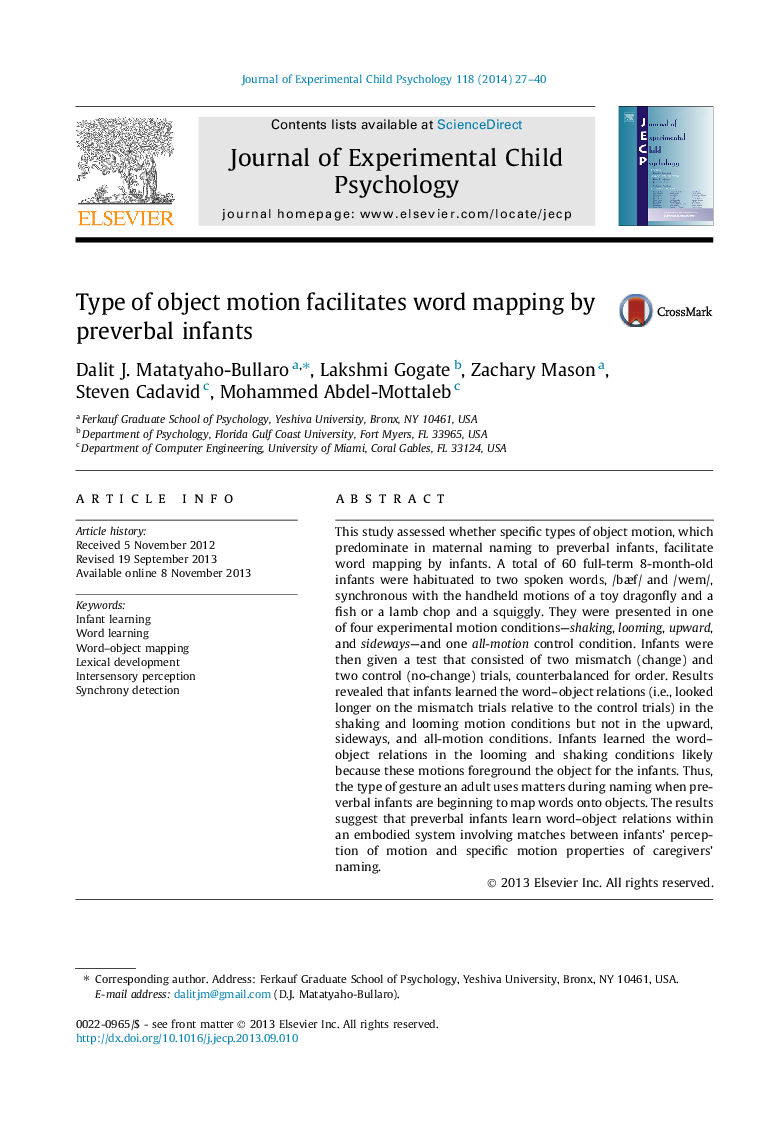| Article ID | Journal | Published Year | Pages | File Type |
|---|---|---|---|---|
| 918097 | Journal of Experimental Child Psychology | 2014 | 14 Pages |
•In an embodied system, matches can be found between caregiver naming and infants’ word mapping.•In Gogate and Matatyaho (2008), looming and shaking predominated in maternal object naming.•In the present study, preverbal infants mapped words onto objects using looming and shaking motions.•Thus, infants find salient the same motion properties that caregivers provide.•The findings provide evidence for a developing embodied system.
This study assessed whether specific types of object motion, which predominate in maternal naming to preverbal infants, facilitate word mapping by infants. A total of 60 full-term 8-month-old infants were habituated to two spoken words, /bæf/ and /wem/, synchronous with the handheld motions of a toy dragonfly and a fish or a lamb chop and a squiggly. They were presented in one of four experimental motion conditions—shaking, looming, upward, and sideways—and one all-motion control condition. Infants were then given a test that consisted of two mismatch (change) and two control (no-change) trials, counterbalanced for order. Results revealed that infants learned the word–object relations (i.e., looked longer on the mismatch trials relative to the control trials) in the shaking and looming motion conditions but not in the upward, sideways, and all-motion conditions. Infants learned the word–object relations in the looming and shaking conditions likely because these motions foreground the object for the infants. Thus, the type of gesture an adult uses matters during naming when preverbal infants are beginning to map words onto objects. The results suggest that preverbal infants learn word–object relations within an embodied system involving matches between infants’ perception of motion and specific motion properties of caregivers’ naming.
